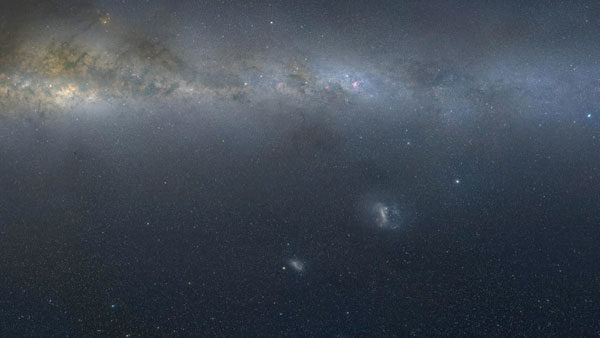
For stargazers in the Northern Hemisphere, it's easy to forget that the Milky Way is actively consuming two dwarf galaxies. Those in the Southern Hemisphere have a front row seat to watch our galaxy wreak havoc on the Large and Small Magellanic Clouds (LMC and SMC). But there's more to the story — the dwarfs are not only gravitationally interacting with the Milky Way but with each other as well.
The gravitational effects evident from these interactions can tell us a lot about the history and evolution of these galaxies as well as the environments surrounding them, but gravity isn't the only force at work here. Magnetic fields play a role as well, one astronomers are still trying to puzzle out. Now, for the first time, researchers using the Australia Telescope Compact Array radio telescope in New South Wales, Australia, have detected a magnetic field in the space between the Magellanic Clouds. Called the Magellanic Bridge, this structure is a 75,000 light-year long filament of gas and dust that stretches from the LMC to the SMC. These results are published in the Monthly Notices of the Royal Astronomical Society (full text here).

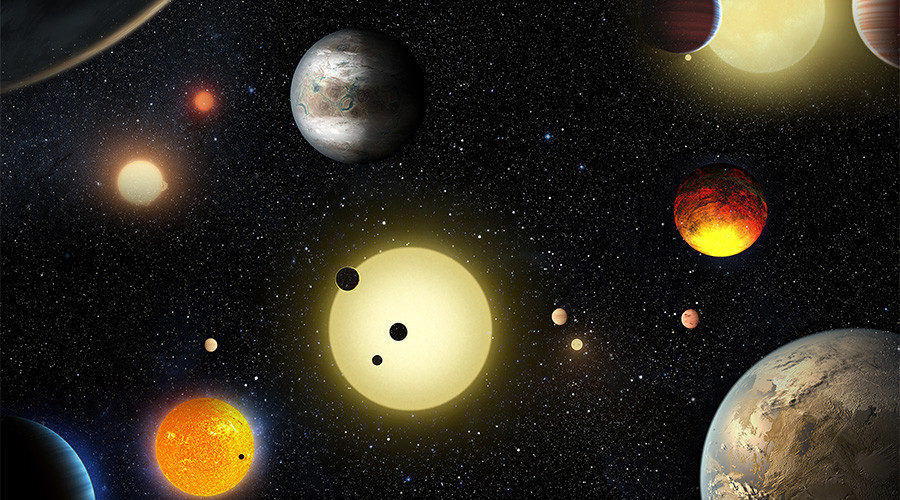
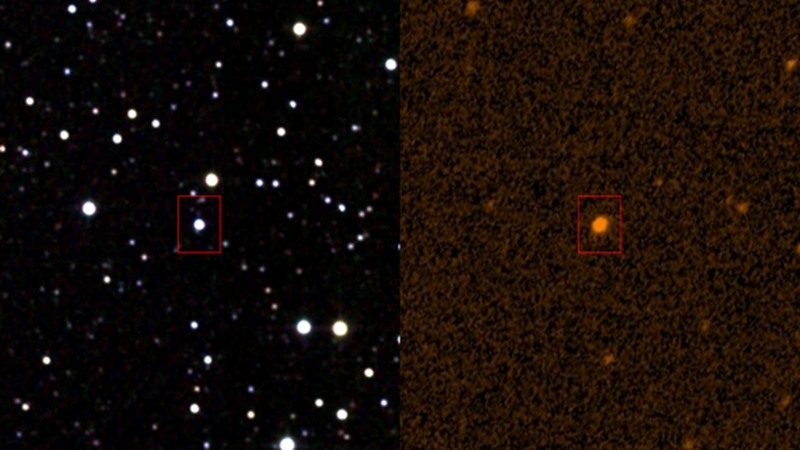



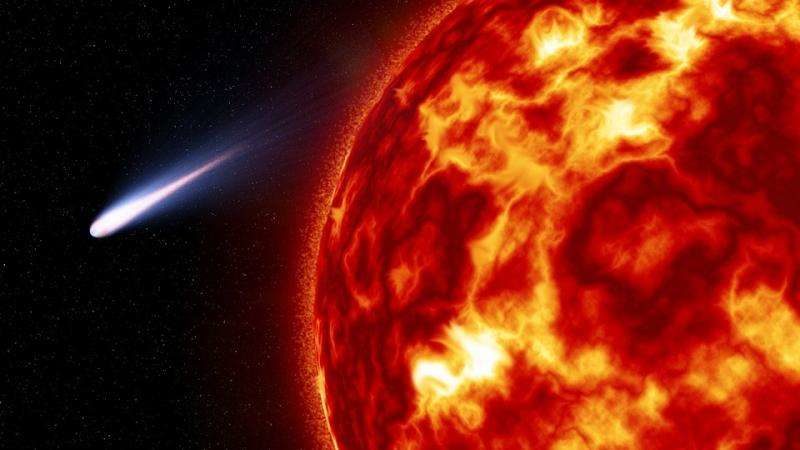

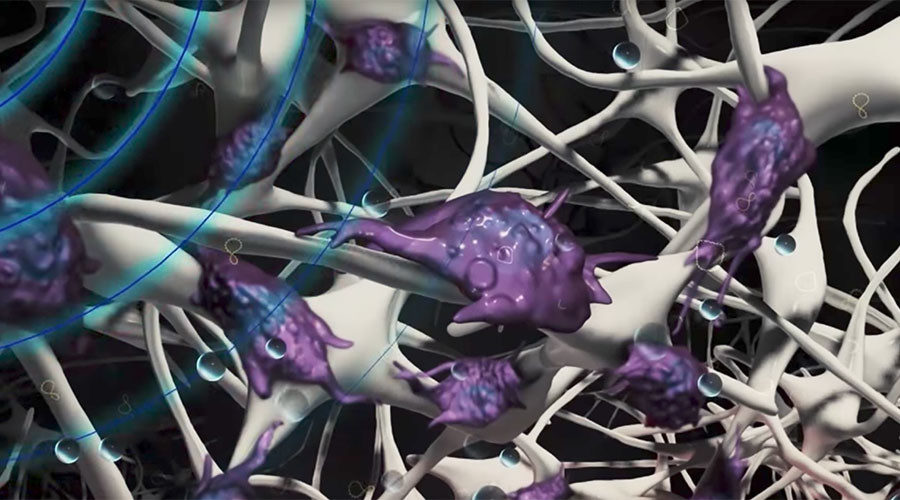



Comment: Seven years ago BP hit a technical obstacle in the form of methane hydrates, or flammable ice, when they were trying to lower a giant containment dome to trap oil from a blown-out Gulf of Mexico oil well on the sea floor.
See also: